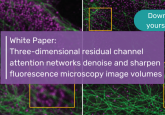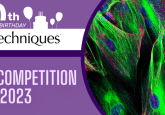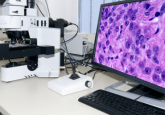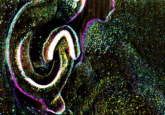How can plants ‘see’ the position of a light source?

Researchers have identified key structures in photosensitive plant tissue that allow them to determine the direction of light, leading to positive phototropism.
A recent research collaboration between École Polytechnique Fédérale de Lausanne (EPFL) and the University of Lausanne (UNIL; both Switzerland) has revealed a structural quirk of some plant tissues that allows them to determine the direction of light. By providing a clearer picture of the mechanism behind this process, the study, led by Christian Fankhauser (UNIL) and Andreas Schüler (EPFL), provides new avenues for exploration in the development of more resilient and productive crops.
Even without eyes, most organisms are capable of determining the direction light is coming from. In plants, blue-light-absorbing phototropin photoreceptors are responsible for detecting light, enabling them to grow towards it or position their leaves in its path, a phenomenon known as positive phototropism. While the detection of light and the subsequent mechanisms that lead to the differential growth response required for positive phototropism is well understood in plants, the physical structures of the light-sensing tissues that allow a light gradient to form, from which a direction can be determined, remain unclear.
Having observed an Arabidopsis thaliana mutant with a transparent stem that didn’t correctly respond to light, Fankhauser’s team was prompted to explore the questions of directional light detection further. To do this, they enlisted the help of Schüler’s team to compare the mutant’s tissue structure with wild-type samples of the species using transmission electron microscopy and cryo–scanning electron microscopy.
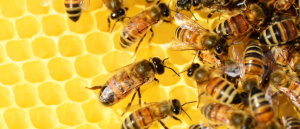 Monitoring local antimicrobial resistance prevalence using honey bees
Monitoring local antimicrobial resistance prevalence using honey bees
Honey bee colonies show promise as biomonitors to track antimicrobial resistance and environmental contamination.
These investigations revealed that the transparency observed in the mutant’s stem was due to the presence of an aqueous liquid in intercellular channels that are typically filled with air in the wild-type samples. Further exploration strongly suggested that the replacement of the air in these channels with a liquid abrogated the mutant’s ability to successfully determine the direction of light. The team tested this hypothesis in Arabidopsis thaliana and other species by water infiltrating key organs, such as the leaves and hypocotyls, of different species and observing their ability to successfully conduct positive phototropism.
The team used light microscopy and fluorescence techniques to determine that due to the differing refractive indices of air and water, these air channels enabled the establishment of a light gradient that can be detected by photoreceptors and used to detect the direction of a light source.
The study also provides a greater understanding of the formation of these channels and their alternate functions, such as preventing hypoxia in the case of flooding by providing the plant with a store of air when submerged. With the demand on agriculture ever expanding, any information that helps us better understand natural mechanisms that could be altered or utilized to maximize efficiency is vitally important.
